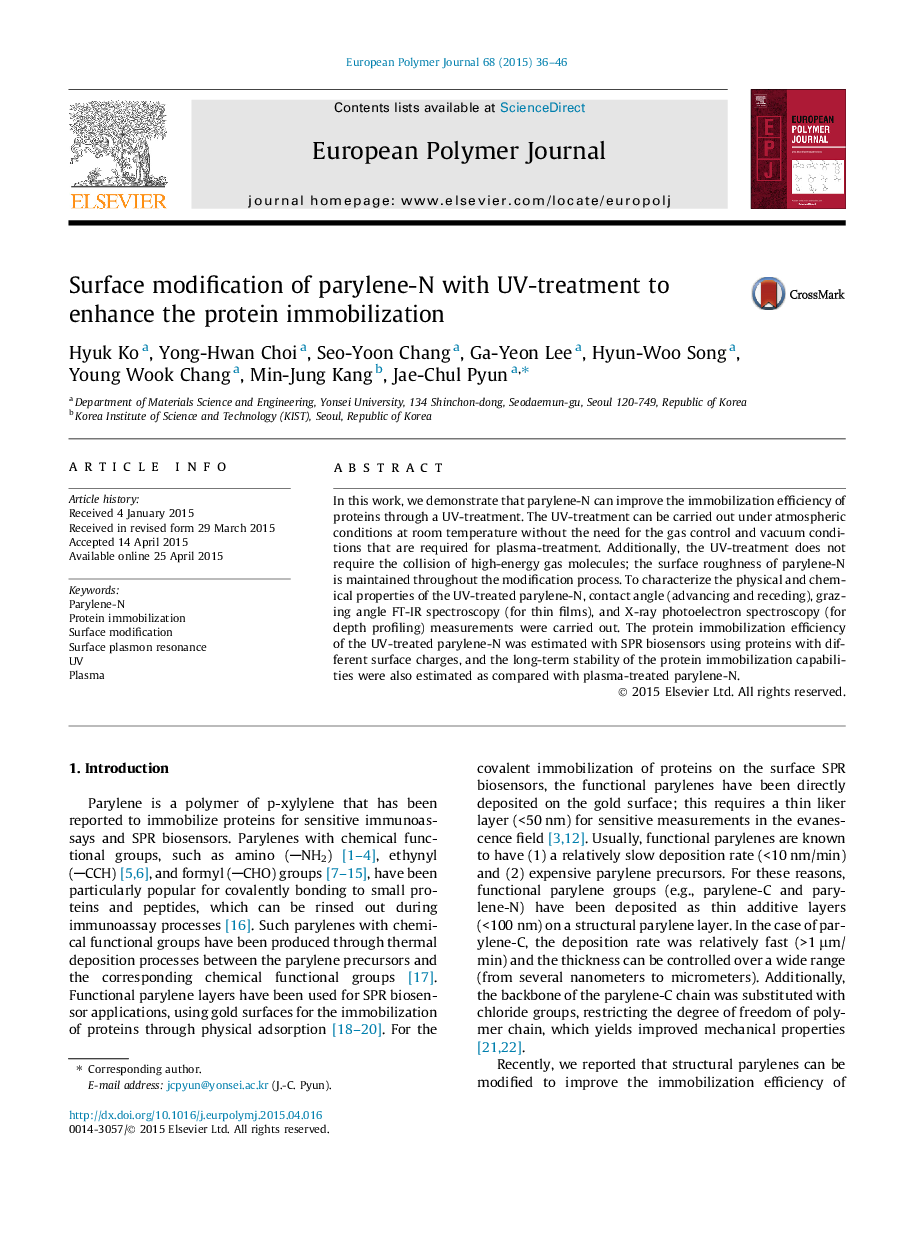| Article ID | Journal | Published Year | Pages | File Type |
|---|---|---|---|---|
| 1395137 | European Polymer Journal | 2015 | 11 Pages |
•UV-treated parylene-N was presented to improve the protein immobilization efficiency.•Modified parylene-N was characterized using contact angle, FT-IR, depth profile of XPS.•Long-term stability of UV-treated parylene-N was demonstrated with an enzyme reaction.•SPR sensor evaluated protein immobilization efficiency with proteins of known pI values.
In this work, we demonstrate that parylene-N can improve the immobilization efficiency of proteins through a UV-treatment. The UV-treatment can be carried out under atmospheric conditions at room temperature without the need for the gas control and vacuum conditions that are required for plasma-treatment. Additionally, the UV-treatment does not require the collision of high-energy gas molecules; the surface roughness of parylene-N is maintained throughout the modification process. To characterize the physical and chemical properties of the UV-treated parylene-N, contact angle (advancing and receding), grazing angle FT-IR spectroscopy (for thin films), and X-ray photoelectron spectroscopy (for depth profiling) measurements were carried out. The protein immobilization efficiency of the UV-treated parylene-N was estimated with SPR biosensors using proteins with different surface charges, and the long-term stability of the protein immobilization capabilities were also estimated as compared with plasma-treated parylene-N.
Graphical abstractFigure optionsDownload full-size imageDownload as PowerPoint slide
